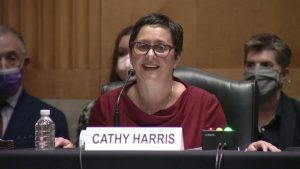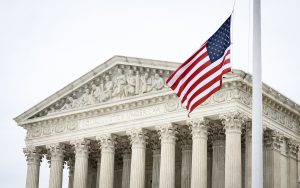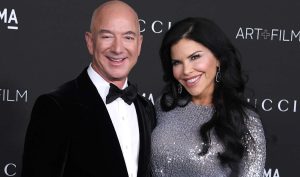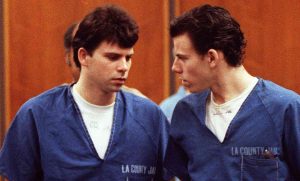Mr. Gunderson is a nationally known expert who has testified in multiple venues regarding intellectual property damages. Mr. Gunderson has testified in patent infringement disputes in a variety
of industries including Software, Semiconductor, Oil & Gas, Airline, Consumer Products and Telecommunications. In addition, Mr. Gunderson has taught classes at several universities on
intellectual property damages as well as presenting on damages topics for continuing legal education in a variety of forums. He discusses the changes he has seen in intellectual property damages
and the key behind working as a damages expert.
When did you begin your professional career as a damages expert?
I have been working in the damages assessment area since the early 1990s. Over the course of my career, I have been affiliated with specialised boutique consulting firms and large multi-disciplined consulting services organisations.
In 2012, I formed Echelon Analytics LLC. Echelon Analytics is comprised of a number of leaders in the financial consulting area, including significant experience in intellectual property infringement damages.
Over the past twenty plus years that you have completed analyses of intellectual property infringement damages, what are some of the general changes you have seen?
One general trend is the required detail to be included in damages expert reports. Early in my career, it was not uncommon, even in larger cases, for experts to issue damages reports that were much shorter even as little as 20 pages in length. Today it is not uncommon for damages reports to exceed 200 pages (over 1,000 footnotes), not including attached schedules.
The increased length is directly related to the increase in Daubert challenges to damages experts. Today, it is common that damages experts and other experts hired by both plaintiffs and defendants are the subject of Daubert challenges. These types of challenges have become a matter of course in many cases.
In the area of the intellectual property damages theory and analytics, what are some of the “hot button” issues that you have seen?
Many of the issues that appear to be current “hot button” issues have actually been considered in damages analysis and theory many years ago. As products have generally become more complex and sophisticated, and the number of large damage amounts being awarded by juries have grown, the courts have brought a heightened focus to light on these issues.
For example, in the patent infringement area, issues regarding when the entire market value rule is applicable, as well as in what cases an apportionment of the royalty base value is appropriate, have been a focus of the courts. As in the past, consideration of the entire market value rule and/or apportionment is important in each patent case. In my experience, it is the specific facts and circumstances of the case that determine the appropriateness of which damages methodology to employ.
Regarding apportionment, the Federal Circuit decided in the Mentor Graphics v. Eve-USA case, in March 2017, that when the lost profits damages Panduit factors are met, the factors incorporate into the analysis the value properly attributed to the patented features. The decision states that no further apportioning of lost profit damages was required when the jury returned its verdict by applying the Panduit factors.
Regarding settlement agreements, a recent Federal Circuit decision, Prism Tech. v. Sprint Spectrum, in March 2017, the Federal Circuit found that a settlement agreement involving the patented technology at issue can be probative of the technology’s value if that value was at issue in the earlier case. In its decision, the Federal Circuit noted that various factors may work to make a settlement payment of an earlier suit either too low or too high as to the patent valuation that is presented in a later suit. The Prism case states that it is the specifics of the settled case and the particular settlement agreement itself that should be considered and compared to the current case.
Another example of a change that has occurred in the patent damages arena is that the 25% rule of thumb, which had been used by many damages experts in reasonable-royalty analyses, was struck down. Just over six years ago, in a January 2011 Uniloc v. Microsoft case, the Federal Circuit stated that as a matter of Federal Circuit law the 25% rule of thumb is a “fundamentally flawed tool for determining a baseline royalty rate in a hypothetical negotiation”.
Any other recent issues in intellectual property infringement damages that you have seen developing?
Yes, I have seen more extensive use of fair, reasonable, and non-discriminatory, or FRAND, licensing arguments being made by damages experts. The analysis in such cases may involve the use of a modified Georgia-Pacific fifteen factor framework to determine a reasonable royalty.
In your opinion, what are a few important aspects of working as a damages expert in litigation disputes?
In my opinion, one important aspect of working effectively as a damages expert is the ability to inform the jury and client teams about the opinions the damage expert is providing as well as the damages concepts, theories, and related facts relied upon by the expert at the time of trial. It is important that damages experts have the necessary expertise to allow them to move forward in the case with confidence that the opinions provided are well supported by comprehensive research and insightful analysis.
Another important aspect of working as a damages expert is to bring an ability teach and to relate with the jury at the time of trial. One way this can be accomplished is by delivering what can be complex information in an organised and understandable manner. As a damages expert, my audiences, including juries, investors, government agencies, and the client teams I work with, will use that information and the opinions I provide to make important decisions.
Can you share a ‘nugget’ of advice which you think lawyers dealing with damages experts should be aware of?
One area which can be helpful is to get the damages expert involved in the case as early as is practical, given the discovery process and respective case scheduling. This can be useful to the end client and the litigation team, as it can allow me a further ability to request documentation or other information and providing a more detailed and informed understanding of the opinions I have formed and the basis that I have relied on in forming my opinions.
How do you think the TC Heartland decision will impact damages in intellectual property infringement cases?
This issue does not pertain specifically to the damages area, but it is an area that I have been watching develop as additional information becomes available. The TC Heartland case has the potential to alter where patent cases are ultimately litigated.
My understanding is that for decades, the Federal Circuit has taken a broad view of venue in patent cases, which gave patent holders the ability to bring suit in essentially any Federal District court. The May 2017 TC Heartland v. Kraft Food Group Brands decision by the Supreme Court has been referred to as major milestone in patent litigation. For example, in recent years, the Eastern District of Texas has been a venue of choice for thousands of patent infringement suits and has been the top venue preferred by many patent holders.
As of today, however, courts across the country appear to be divided on the significance of TC Heartland in guiding where patent suits may be filed. Some judges have denied motions to transfer based on the Supreme Court’s TC Heartland ruling, on the grounds that the decision did not change the law as to the proper venue for infringement matters. Other judges have found the TC Heartland ruling to be a major change in venue law.
How filing patterns may shift in the future and what impact the decision may have regarding where patent cases are ultimately litigated remains to be seen.
LANCE E. GUNDERSON
Managing Director
lgunderson@ea-us.com
www.ea-us.com
Lance Gunderson has over 22 years of experience in financial and litigation consulting. His area of expertise is intellectual property damages analysis and calculations including lost profit calculations, reasonable royalty determinations, and other intellectual property quantitative analysis such as valuations. Mr. Gunderson has provided financial analysis and valuation assessments on patent, trademark, trade secret, and copyright issues. Mr. Gunderson has testified numerous times in patent infringement disputes, trademark disputes, copyright disputes and false advertising disputes in both state and federal court. He has assisted in license negotiations and has been involved in technology transfer from Texas A&M University to the private sector. Mr. Gunderson also has testified on damages in breach of contract disputes.
In cycling, “echelon” refers to the most efficient alignment of the riders in a challenging crosswind. We believe that a group of proven professionals with deep, big-firm experience, an ability to simply communicate complex issues, and a focus on the things that really matter enhances the value we provide our clients.
We strive to deliver sound advice, reliable analysis, and cogent testimony.
We offer extensive big-firm experience from an agile platform, economically delivering informed insight and engagement efficiency to our clients in dispute-related matters. Our highly experienced and credentialed expert witnesses and consultants have demonstrated track records of working strategically with our clients in all phases of high-stakes disputes to best address each client’s unique circumstances.




















